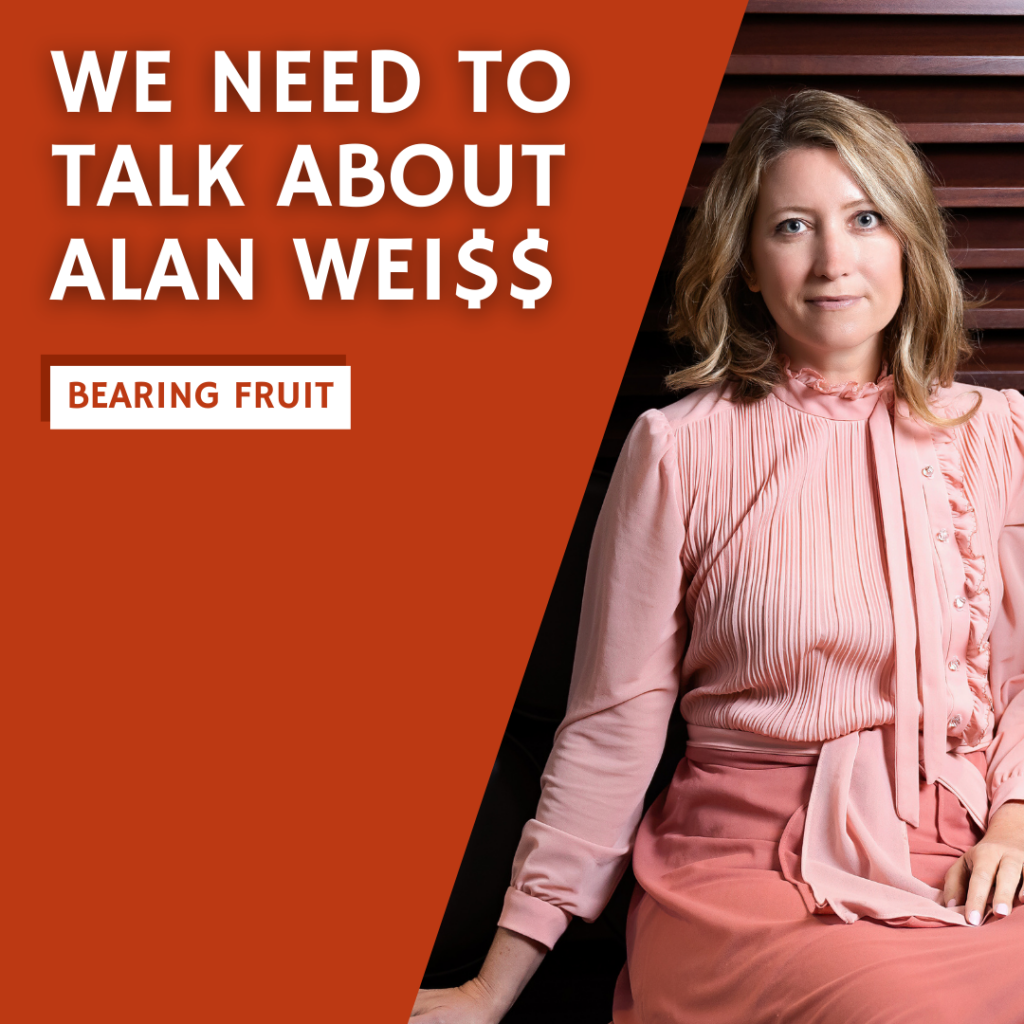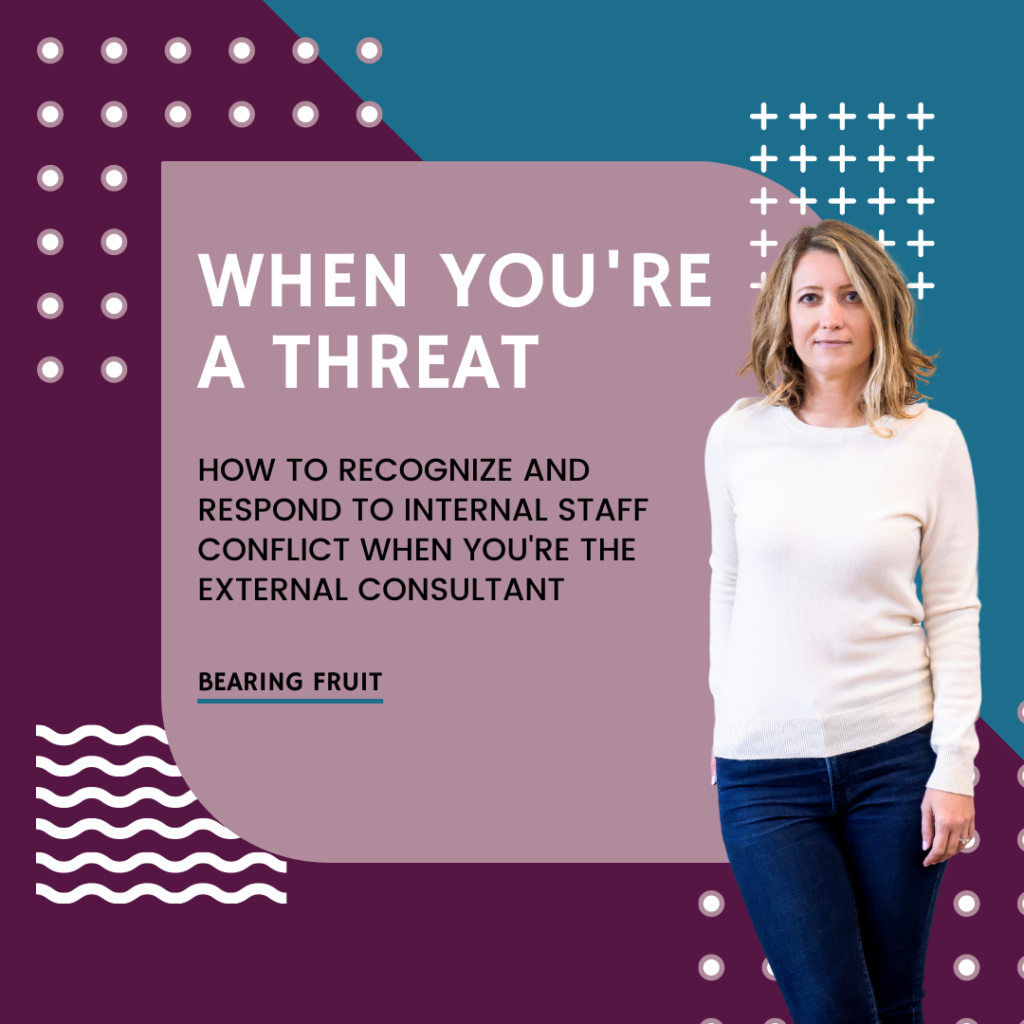We Need to Talk About Alan Wei$$
I don’t like trash talking people. Publicly. Come to my house with some guacamole and I’ll make margaritas and tea all day.
But this one feels important.
Like so many beginning entrepreneurs, I was advised by well-meaning, more established friends to seek the counsel of Alan Weiss. He’s the Million Dollar Consultant (TM). He’s the consultant to consultants (TM). He’s prolific and heavily trademarked.
This dude’s work appears in every Top 10 Books for Entrepreneurs list.
He has enough decent advice to fill one book. But his publishers know that suckers like you and old me will purchase anything he produces so he’s got a string of books, all very slight redigestions of his first.
I’m not linking to his work here because I think he’s trash but if you’re nosy, he’s easy to find.
Some of his philosophy sticks with me today. I remember how he sells the idea of working from anywhere. Take a prospective client sales call from Tahiti. Why not? In this digital age, we entrepreneurs have the advantage. Just be able to turn around a proposal in 24 hours.
He’s right. A few years back I hit send on a contract worth $60K, then closed my laptop, picked up my mai tai, and smiled at the ocean. It was as awesome as he said it would be.
So what’s the problem?
A Bearing Fruit reader said it best. When I wrote about Things I Quit and asked yall to tell me what you quit, I got this reply:
“I quit comparing my business to others and reading business books by self-aggrandizing white men like Alan Wei$$.”
Yup.
This dude’s ego is so gross. After all, his social media handle is the name of his favorite luxury car. The cover photo on many of his books: him, grinning ear to ear, leaning on the hood of said luxury car.
It’s bravado and machismo and that’s not the model I want to follow. Back when I started, I didn’t know there was another way.
He calls himself the Contrarian Consultant (TM). As if his notions somehow go against the grain. They don’t. In actuality, his use of the label “contrarian” here just means he gives himself permission to be a total jerk.
I don’t follow him but somehow this ended up in my feed on LinkedIn. Resham, who is no longer on the platform, posted a pretty innocent poll.
![Resham posts a poll, prompting people to test their grammar by filling in the blank for "I'm sorry - I didn't [blank] to disturb you." Alan Weiss comments "...intend to disturb you with another inane poll." It has 23 likes.](https://theevergreenempire.com/wp-content/uploads/2023/03/alan-weiss.jpg)
Do you see his response? WTH?!
And what world class consultant (TM) spends time trolling randos on social media?
AND so many people blindly follow him that no matter what he posts, even a rude comment, he’ll get likes and endorsements.
The first lesson here: Punch up. If you’re gonna publicly trash someone, do it to those who are way above you (like I’m doing right now). When big names punch down, it’s like a high schooler beating up a first grader. You’re a bully.
The second lesson: You’ve gotta be discerning about the people you follow. Sure, the advice might be good – but if they have the personality of a hot baby diaper, some of that will stick to your ribs, too.
You know how people say your personality is the average of the 5 people closest to you? It’s kinda the same for who you choose to follow. Choose wisely (not Weiss-ly), ok?
To take that just one step further, who you like and endorse on socials actually does matter. For example, if you’ve been warned that that one dude is a creep but you keep collaborating and promoting his work on your platforms, you’re a creep by association.
I know that for many people of color and white women, we felt like we haven’t had much of a choice. Self-aggrandizing white men and our proximity to them has historically been how we’ve been able to protect our own status and progress.
That’s how we end up with 51% of white women voting for Donald Trump. They don’t necessarily love Trump. They’re reliant on their white husbands for their livelihood.
We can choose a different model. I hear the risk involved. The risk is lessened when we stick together.
Here’s the bottom line: Let’s stop supporting a$$holes.
What business books are you into these days? I’m reviewing a few right now. Email me with your best suggestions and I’ll compile a list.
The Secret to Social Media
Actually, this is the secret to pretty much anything.
Show up. Consistently.
That’s it.
Whew!
The secret isn’t to write 365 homerun tweets that go viral. No one can do that. It’s a bar set too high – so high it’ll intimidate you into never ever hitting Send.
Accept the fact that much of it will be meh.
Like any bell curve, most of your posts are going to be perfectly fine. Some will suck. Occasionally, you’ll knock it out of the park.
Some days I write posts that get hundreds of interactions.
Some days I clearly missed the mark.
Most of the time, my posts are somewhere in the middle. Good, not viral.
By the way, that popular post and that least popular post took about the same amount of time to write. I’ve seen zero relationship between the time you take to develop your social media content and how much it resonates with your audience.
So don’t overthink it. Don’t be a perfectionist about it. Just show up, consistently.
While you’re there, respond to some other folks. That way, you’re showing up in their comments, not solely expecting them to come to yours. Spend 10 minutes on this.
Then get off. Cause too much social media is bad for your mental health.
Same thing for newsletters.
Be there on a consistent basis.
In fact, Steph Smith wrote a reassuring article about how greatness is really just being good, repeatedly.
Consistency is the hard part because it’s soooooo easy to give up when your new podcast only gets 6 downloads. It’s much more difficult to trust the process for a little longer and keep editing future episodes.
Here’s what I mean:
Say you were to visit my data visualization blog and see that my last post was June 2022. And the one before that was from 2021. At your most gracious, you might think “Wow she’s got so much work she can’t even dedicate time to her blog.” But on a typical day, you’d likely conclude that I just gave up on my little side project.
It would be a signal that I couldn’t see something through (like, not only did I give up on the blog but I also didn’t bother to remove the withering thing from my site, like some skeletal succulent abandoned in a windowsill).
But if you come to my blog and see I’m consistently sharing good ideas every two weeks, you begin to see me as a reliable resource. Someone who can be trusted.
Trust builds connections. And connections get you contracts.
Showing up consistently keeps you top of mind. So when your boss says “hey I think it’s time we get some data visualization training” I’ll be the person you think of because I’ve shown up in your inbox with good ideas every two weeks for years.
Yep, it’s a long game.
But you can’t show up consistently everywhere, all the time. You can’t be running 100 different long games. That’s a burnout maker.
Which means you have to be choosy about where you want to put your energy. Pick one direction. Put it in your calendar. And go.
What have you chosen? Where are you showing up consistently and playing the long game? Send me a link so I can ride shotgun.
When You’re a Threat
I’ve gotta tell you about the *funniest* thing that happened to me at work in 2021. I mean, in the whole entire year.
Let me set the stage:
My team was hired to help a group of scientists redesign their go-to graphs and, in fact, their entire PowerPoint template. Their main audience was other scientists so the bar isn’t usually very high in these cases but lemme tell ya, they needed help.
I wish I could show you what their slides looked like before, but I’ve gotta protect the innocent.
As we do in all design projects, we developed a handful of options for design directions and had a Zoom call to walk through and talk through the strengths and shortcomings of each possibility.
These folks were suuuuper drawn to the direction that included icons for each section of their talk.
Totally cool. Icons can be fun.
But then came the real work: Getting them to agree on each icon.
I say this with all the love and humor in my heart: Leave it to a group of scientists to totally overthink the meaning held in each icon choice.
Bless the hearts of all nerds, everywhere.
The Great Icon Debate led to a few more Zoom calls, where we’d decide on a finalist for some sections of the PowerPoint and, for others, they’d send me back to the icon ocean to fish for more options.
Third or fourth call that included icons on the agenda and lemme tell you what went down.
We’d been walking through some of the icon choices they needed to make for the first half of the call.
I wrapped up the deliberation by saying “ok why don’t we move on and you all can decide about these icons on your own and get back to me.”
And someone who had her camera off and thought she was muted yelled out “BECAUSE YOU’RE OBSESSED WITH FUCKING ICONS!”
On a work Zoom meeting. In front of 10 of her colleagues. Including her boss.
I couldn’t control my face.
Her colleague on the line said “What was that?”
And the sailor suddenly found the mute button. I can only imagine their sheer horror.
I AM STILL CHUCKLING ABOUT THIS. IT’S BEEN MONTHS.
Aside from being a hilariously human moment, there IS a business lesson in here.
It took me a second to see it because I had to catch WHO, exactly, had gaffed so well. It was the in-house graphic designer.
Now can you decipher what was going on?
I’ve witnessed this situation before (though this was the funniest instance, by far).
In the past, it ended up revealing that the unhappy staff person was not really frustrated with the topic at hand. More so, they were unsettled by the fact that they had the skills to do what I was doing and weren’t pleased that there was an outside consultant brought in.
Underneath that coulda been a turf / ego protection mechanism.
Or it coulda been that this person knows a lot more about managing an icon discussion than I do.
Or it’s possible the project made them feel like their skills aren’t where they should be and this, therefore, was a threat to their security.
It’s not really my place to find out what’s underneath. As the outsider, it’s my place to recognize that something deeper is going on and strategize on what to do about it.
I haven’t run into this situation that many times, but I can tell you that I tried:
- Partnering with the internal expert to come up with something even better
- Transitioning the project to the internal expert & staying on hand to be a resource
- Totally ignoring the problem
And I added a point to my Discovery Call Checklist to specifically ask about existing internal talent. Better to strategize how to handle them with my point of contact at the very beginning of the project instead of waiting until the Best Zoom Outburst of 2021 happens.
Ok, let’s trade. What’s the funniest business moment you had last year? I know you remember it. Write back and share. (It’ll stay between us.)





